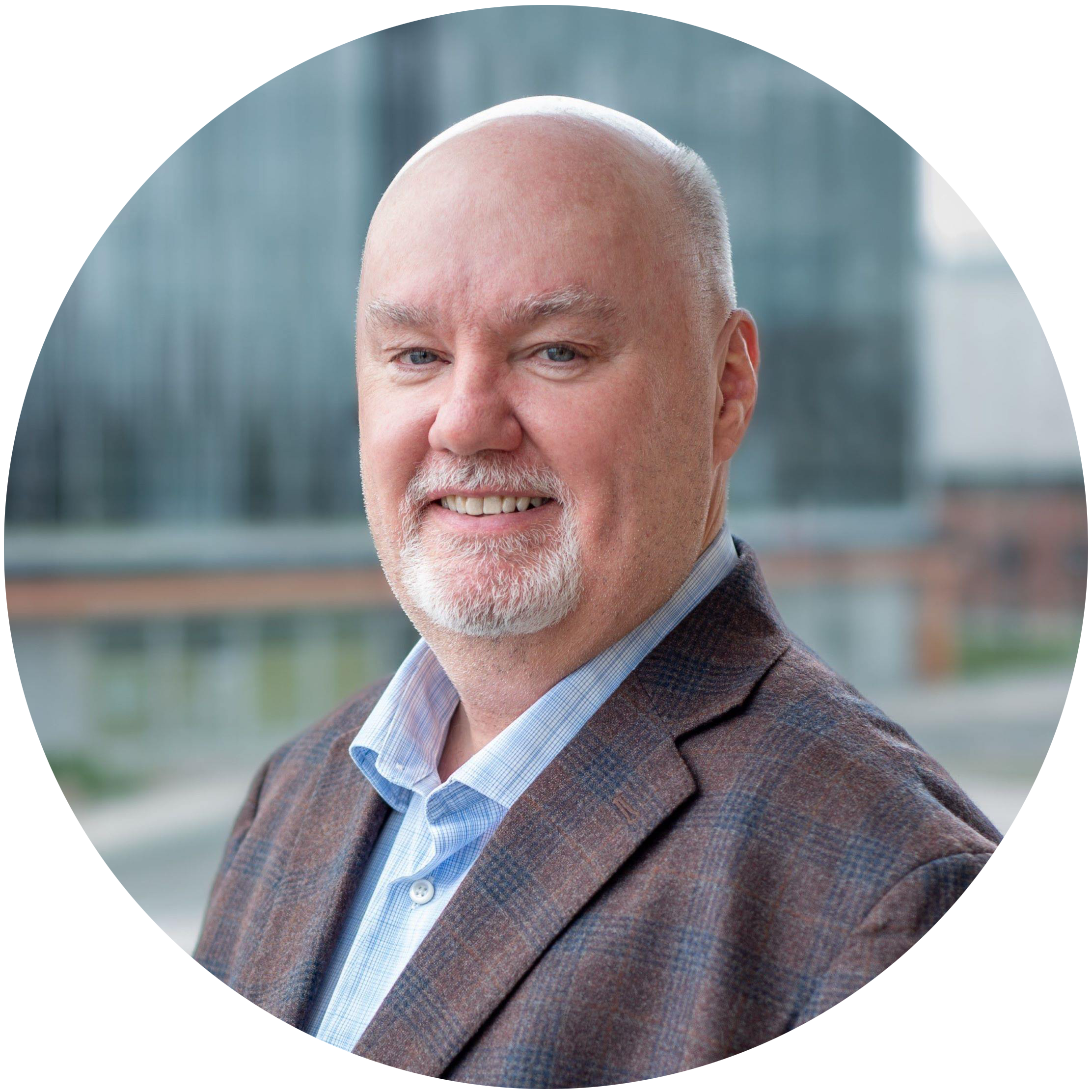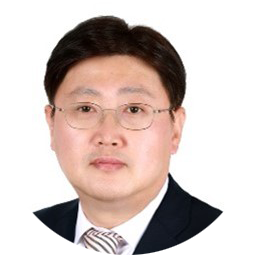Keynotes

Wenjun Zhang
Director, Cooperative Media-Net Innovation Center (CMIC), Shanghai Jiao-Tong University

Director, Cooperative Media-Net Innovation Center (CMIC), Shanghai Jiao-Tong University

Paul Griffin, PhD, CPA, CFP, FCSI, is the Senior Dean for the Faculty of Applied Sciences & Technology at the Humber Institute of Technology & Advanced Learning in Toronto. Prior to this role, Paul was the Associate Dean for the Longo Faculty of Business at Humber and before that was a professor within the same department. He received his Ph.D. in Management from the University of Bradford in the United Kingdom. In addition, he has achieved 21 professional designations, including Chartered Professional Accountant (CPA), Certified Management Accountant (CMA), Certified General Accountant (CGA), Certified Financial Planner (CFP), Fellow of the Canadian Securities Institute (FCSI), Chartered Professional Marketer, and several others.
Before joining academia, Paul was engaged in the financial services sector for more than 25 years and was most recently the National Director of Operations and Compliance at ING Canada. He remains an active member of several boards and committees, most notably the Insurance Institute of Canada’s Ethics Advisory Board, the Federation of Canadian-Brazilian Businesses, and he serves as Chair of the Education Committee and Board of Directors for the Canadian Institute of Financial Planning as well as Chair of the Chartered Institute of Marketing Management of Ontario.
Paul co-authored Operations Management (Pearson Canada) – – the number one textbook in Canada on the subject, currently adopted in more than 60 universities and colleges across the country. He continues to write for practitioner-targeted publications and develops a continuous stream of technical manuals, materials, and courses for both the academic and industrial sectors. He remains an active member of the Editorial Advisory Board for several academic journals and publications.

ATSC 3.0-based Enhanced GPS Service Solution
This keynote speech introduces MBC’s latest ATSC 3.0-based Broadcast RTK technology, which provides cm-level precision positioning. This technology converges ATSC 3.0 broadcasting network with broadband (4G/5G/WiFi, etc.) for high accuracy. Furthermore, this keynote delivers several applications of enhanced GPS and service examples in Korea and the United States.
Seungho Lee is the team leader of MBC’s Spatial Information Business Team, a Korean terrestrial broadcaster. Having joined a broadcasting company through a mobile carrier, he is an expert in broadcasting and communications. In addition, as a director of the Institute of Positioning, Navigation and Timing, he is an expert and businessman in the field of satellite navigation and is in charge of R&D and business of ‘MBC RTK’ service.
He succeeded in pioneering the new technology and business field of broadcasting in the era of the 4th Industrial Revolution by combining communication and satellite navigation technology with hardware design technology, leading the market in Korea overwhelmingly.
He is now pioneering overseas markets in earnest by commercializing receiver products equipped with global LTE function and ATSC 3.0 broadcasting technology.
Seungho has been leading this team since 2017 and successfully launched MBC RTK service, the world’s first broadcasting and communication convergence commercial precision positioning service. In 2019, the world’s first precision positioning service using ATSC 3.0 broadcasting network was successfully implemented in Korea, and in recognition of this, he received the Presidential Award of the Radio Broadcasting Technology Awards in 2021. In 2022 NAB Show, his team successfully demonstrated drone delivery using ATSC 3.0 Enhanced GPS technology, and since 2023, they have been working together to implement commercial services in the United States using this technology.

Pushing the Boundaries of Broadcasting – How Diverse Use Cases Drive Innovation
Abstract: Broadcast technology is evolving to meet the needs of a data-driven world. ATSC 3.0 is an ever-expanding platform that is continually developing. Innovation is inspired by new use cases and business scenarios being introduced by a diverse group of organizations around the world. This session will explore examples of the unique demands that different countries have for their broadcast ecosystem, and how ATSC members are engineering solutions to meet the demand.
Madeleine Noland is the President of the Advanced Television Systems Committee Inc. A 20-year industry veteran who is widely respected for her consensus-building leadership style, she chaired the technology group that oversees the ATSC 3.0 next-generation broadcast standard before being named ATSC President in May 2019. Previously, she chaired various ATSC 3.0-related specialist groups, ad hoc groups and implementation teams since 2012.
Noland began her career in the television industry in 2004 with Backchannelmedia Inc., an interactive television technology developer. It was during her work there that she first became involved in ATSC projects. In 2012, she moved on to product and project management roles at Telvue Corp. before joining LG Electronics CTO’s office in 2013. Noland represented LG in a variety of industry organizations for over six years.
Most recently, Madeleine was awarded the prestigious 2022 David Sarnoff Medal by the Society of Motion Picture & Television Engineers (SMPTE) in a ceremony held in Hollywood, California. She has also received TV NewsCheck’s “2019 Futurist” Women in Technology Award and was named one of 2018’s “Powerful Women in Consumer Technology” by Dealerscope magazine. In 2016, while the Chair of TG-3, she received the ATSC’s highest technical honor, the Bernard J. Lechner Outstanding Contributor Award recognizing her leadership related to the development of ATSC 3.0 Next Gen TV.
Credited on three U.S. patents for television technology, Noland is a member of the Society of Motion Picture and Television Engineers, the Society of Cable Telecommunications Engineers, and the Institute of Electrical and Electronics Engineers – Broadcast Technology Society. Noland graduated cum laude from the University of Massachusetts. She enjoys travel, and she plays keyboards in a band called “Brave Pursuit.”

Empowering Resilience: The Transformative Role of Broadcasting Technology in Strengthening Communities
Abstract: The ATSC 3.0 standard is the most efficient one-to-many digital terrestrial television system that was designed with datacasting in mind. This makes it capable of serving applications beyond traditional broadcast channels, out to broadband networks. Learn how, in times of uncertainty, The City of Calgary perceives the capability of ATSC 3.0 as offering a way to increase resiliency, support the delivery of essential services, and mitigate some of the rising communication and digital equity challenges. We will explore how we intend to work with the Humber College B²C lab and broadcast collaborators to create Canadas first ATSC 3.0 Smart City with use cases for data delivery that leverage the interconnectivity of broadcast and broadband networks.
Erin Ruttan is the Program Designer and driving force behind The City of Calgary’s Digital Equity program. Her journey with The City of Calgary began 15 years ago and has been anything but linear, yet her north star has always been to make lives better. Erin’s background in public engagement and her extensive experience running social programs in a variety of settings, both urban to remote, gives her a unique, community-focused approach to addressing the digital divide, technology shifts, and the barriers they create.
As part of her tenure within The City of Calgary’s Smart Cities team, Erin spent the better part of two years engaging with Calgarians and conducting in-depth research into global policies and programs. Her goal was to fully understand the extent of the digital divide and its impact on Calgary communities. This culminated into the development of The City of Calgary’s Digital Equity Strategy, a comprehensive plan aimed at reducing the barriers that prevent Calgarians from accessing digital devices, internet services, and literacy skills necessary to connect online the way they choose. Amongst the program’s achievements is the Affordable Hardware Access (AHA) pilot, which has distributed hundreds of repurposed municipal devices to Calgarians in need.
Erin’s interest in ATSC3.0 was ignited when she learned of its potential to improve emergency response and communications, and support rural and remote education. This interest blossomed into a research partnership with Humber College’s B2C Lab, with the goal of transforming Calgary into an ATSC 3.0 Smart City. While work is still in early stages, proof-of-concepts for Calgary aims to leverage the capabilities of ATSC 3.0 to shape the future of broadcasting policy in Canada in a way that is supportive and inclusive of underserviced communities.
Erin’s experience with equity and inclusion doesn’t end at the office. She served as a tandem pilot for the Canadian National Cycling Team for three years, making her one of few able-bodied members of a paralympic team. She is also the founder and continues to run Alberta’s first female run cycling development team, a platform she has leveraged for six years to advance the skills of female athletes and advocate policy changes promoting gender equity within the sport.

Charting the Evolution: Exploring Digital Video Broadcasting Standards from Past to Future
Abstract:
The landscape of digital video broadcasting standards has undergone a remarkable evolution, shaping the way we consume media and revolutionizing the broadcasting industry. This presentation delves into the development of digital broadcast specifications, utilizing the Digital Video Broadcasting (DVB) standards as an example for exploration. The presentation analyses the historical milestones that have defined the evolution of digital broadcasting, highlighting the technological advancements and commercial influences that have propelled the industry forward.
Moreover, the presentation offers a forward-looking perspective, envisioning the development of digital video broadcasting standards into the future. Anticipating emerging technology trends and evolving needs of consumers and broadcasters the presentation provides an outlook into the evolving landscape of media consumption in the digital age.
An independent Broadcast Industry advisor and a guest speaker at Shanghai Jiao Tong University, Dr. Peter Siebert’s career spans 35 years. He has held various positions within the Broadcast industry, most recently he was the Executive Director at the DVB Project Office in Geneva, where he was responsible for all organizational and technology related aspects of the DVB. Prior to this he was with Siemens AG, where he was influential in the design of the end-to-end IPTV and set-top box solution; at SES-ASTRA he was instrumental in the introduction of digital television via satellite, for Europe, based on the DVB/MPEG-2 standards; and at Philips Kommunikations AG, he managed digital audio and visual transmission over telecom networks.
His involvement has been in all aspects of audio-video transmission such as video transmission over telecommunication networks (PDH/SDH), satellite and IPTV networks. He was responsible for several ETSI specifications in the area of satellite transmission, as well as for DVB standards. He holds several patents for various aspects of audio and visual data transmission.
Dr. Peter Siebert received his M.Sc. degree in 1984 and his Ph.D. degree in 1989 in physics from the University in Frankfurt, Germany. In addition, he holds a degree in economics from the University in Hagen, Germany and an MBA from the Open University Milton Keynes, UK. He is a Senior IEEE Member and 2022-2024 Adcom member of IEEE Broadcast Technology Society (BTS).

The Goal of Next Generation Digital Broadcasting – A Complementary Multimedia Network to 6G
Abstract: Digital Broadcasting as a one-to-many transmission system is the most green and efficient way to distribute popular video streams and data services to a large number of user terminals over a vast geographical area. It can greatly alleviate network congestion. However, the broadcast system, until now, is a standalone system. It is experiencing difficulties in integrating with other broadband wireless systems. Recently, there has been a renewed interest in “broadcast-to-mobile”. The main consensus is that the next-generation digital broadcasting should converge seamlessly with future 6G networks. Potential key elements under investigation will include AI-based physical layer technologies supporting high-performance and cost-effective mobile reception, as well as an intelligent and robust Broadcast Core Network (BCN). The BCN is designed to effectively manage High Power High Tower (HPHT) broadcast infrastructure and enables seamless interconnectivity with 6G network and other IP networks. The goal is to facilitate intelligent and efficient distribution of broadband multimedia and data services over integrated HTHP broadcast and 6G satellite-terrestrial wireless networks. Making broadcast systems part of the connected world and digital economy
Prof. Wenjun Zhang (Fellow, IEEE) received the B.S., M.S., and Ph.D. degrees in electronic engineering from Shanghai Jiao Tong University, Shanghai, China, in 1984, 1987, and 1989, respectively. From 1990 to 1993, he was involved in developing the HDMAC system in Germany. He re-joined the Faculty of Shanghai Jiao Tong University in 1993 and became a chair professor in 2002. As the National HDTV Project Leader, he built the Chinese HDTV prototype system in 1998 and was one of the main contributors to the Chinese DTTB Standard (DTMB) issued in 2006. He holds more than 200 patents and published 160 papers in peer-reviewed international journals and conferences. His main research interests include digital video coding and transmission, multimedia semantic processing, and telecommunications. He received many national and international awards. He is the Director of the Cooperative Media-Net Innovation Center (CMIC) and the Chief Scientist of the National Engineering Research Center of Digital Television (NERC-DTV).